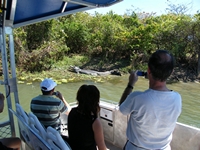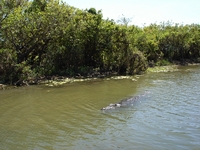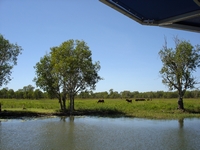Australia So Much to See


“What do crocodiles eat?” one of the French tourists from the front of the boat asked, as the rather large crocodile we had all been
watching lazing on the bank swam towards the boat. “French tourists” was the reply from some of the passengers.
Yellow Waters is a large permanent wetlands area at the junction of
Our boat then backtracked upstream and turned into a wide backwater. The boat we were on was named ANDJIMJIM; the freshwater
Panadanus, which gives the name to Jim Jim Creek and
As much of Kakadu is near sea level; even when the waters retreat after the wet season there are still vast areas of wetlands and
lagoons in Ramsar listed wetland, which encompasses the entire park. Wetlands are selected as Ramsar sites for the list of Wetlands
of International Importance because of ecological, botanical, zoological, limnological or hydrological criteria.
One of the highlights
of a visit to Kakadu is to take a tour boat out on Yellow Waters. The sunset and sunrise tours are particularly popular, but
we chose a middle of the day option to maximise light for photographing birds and animals.
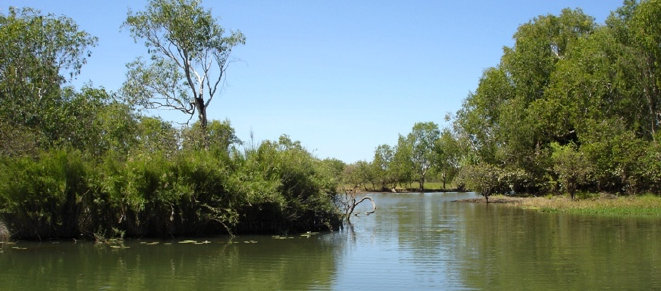
Kakadu National Park featuring the Yellow Waters Wetlands
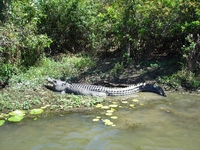
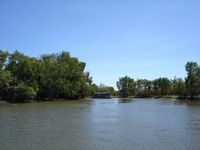
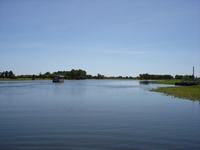
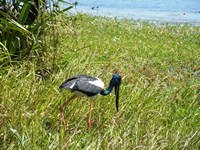
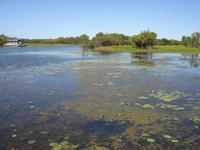
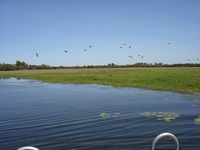
The access road to Cooinda runs mainly through floodplains, with woodlands which include huge Grevilleas and Pandanus. Creeks
are very wide.
Rather than stay at the crowded
Our guide explained that Aboriginal women swim under the Pandanus to feel and collect File Snakes. A large crocodile was visible not
far away from this Pandanus. The Arafura File Snake is a non venomous water snake which strangles its prey. The name
File Snake comes from the rough file like texture of its skin which is very rough to enough the snake to catch and kill fish. Females, being the larger of the sexes, can reach up to 2.5 metres in length.
We headed a little way downstream on the River sighting many birds including Jabiru, Jacana, Brolga, White Egret, Cattle Egret and
Greater Egret, a large Snake Necked Cormorant, Pied Cormorant, Whistling Kite, Rainbow Bee Eater, Magpie Geese, Sea Eagle, Whistling
Ducks, Plumed and Wandering Ducks, Burdekin Ducks and several other species of small Ducks.
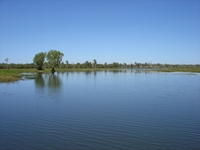
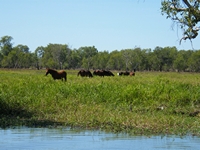
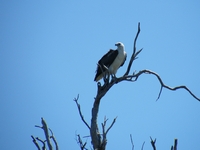
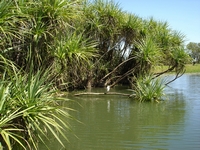
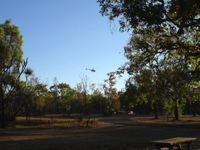
The circular shaped Cultural Centre at Cooinda represents Warradjan; the pig nosed turtle. The Bininj/Mungguy people invite
visitors to the Warradjan Cultural Centre to look into the traditional lifestyles of the Kakadu Aborigines. Spend a couple of
hours walking around the displays, information boards and samples of essential crafts such as baskets, fish nets and spears. Read about the six seasons of Kakadu, and what happens within each of these. The seasons of Kakadu are called Gudjewg, Banggerreng,
Yegge, Wurrgeng, Gurrung, and Gunumeleng. See more about these seasons here. Entry to the centre is free.
